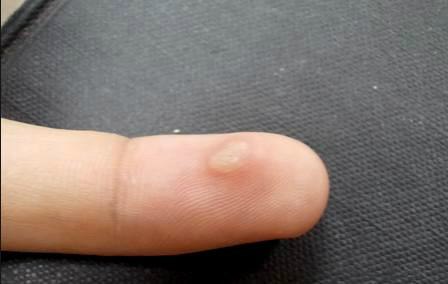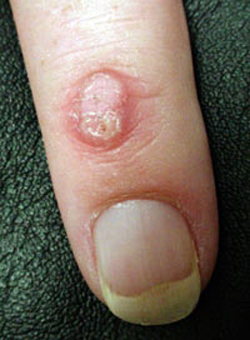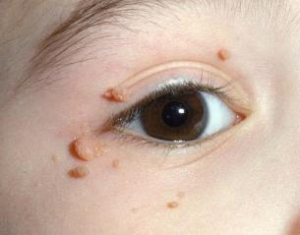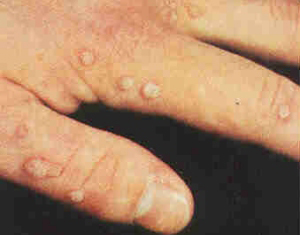
In addition, they often affect just one part of the body (such as the hands or the feet) without spreading over time to other areas.
WHAT ARE SOME TYPES OF COMMON WARTS?
-
There is the familiar type of dome-shaped warts on the backs of fingers, toes, and knees.
-
Plantar warts are found on the bottom of the foot. (The “plantar” part of the foot. These are not “Planter’s warts.”)
-
Flat (“plane”) warts may arise on the face, legs, and other parts of the body, often in large numbers
-
Periungual warts are warts around or under the nail
-
Filiform warts typically appear as a single long stalk, often on the face.
WHAT IS THE TREATMENT FOR COMMON WARTS?
Common warts can be annoying to anyone. This information is about the treatment of common warts. It does not apply to genital or venereal warts. Over-the-counter treatment for common skin warts has long been based upon the use of products containing salicylic acid. Newer nonprescription wart treatments use aerosols to freeze warts.
ARE WART TREATMENTD EFFECTIVE?
Above all, wart treatments require patience. How well wart treatments work is another matter. Warts can appear and disappear without an identifiable cause and may disappear on their own without treatment. Some warts sprout offshoots near the main wart, and others don’t. Some hurt, and others are painless. Certain warts, even of the same type, respond to treatment, while others (even on the same person at the same time) don’t. All treatment methods often require many sessions over weeks, months, or longer to succeed.
HERE IS A PRACTICAL APPROACH TO THE TREATMENT OF WARTS
1. If you can ignore your warts, do so. Eventually, they’ll go away (although eventually can mean a long time — even months or years).
2. If you have an easy case (a single wart on the face or one or a few on the hands), see a doctor for a quick freeze or electrical zap. This method is simple, almost painless, and non-scarring.
3. If you have a hard case, you can start by treating the warts for a few weeks on your own.
-
Plantar warts: Warts on the bottom of the foot feel deep, but they are still within the superficial layer of the skin. Salicylic-acid drops and plasters help remove the thick overlying callus and make the wart feel less like a marble in your shoe. Nonprescription aerosol freezing may be used as well.
-
Common hand warts: These are typically unattractive, although not painful. Salicylic acid can make them smaller and go away in some cases, as can nonprescription freezing.
If you have an all-but-impossible case, don’t try too hard. You don’t want to make the treatment worse than the disease.
Examples:
-
Warts under the nails: These are extremely resistant to treatment. One or two tries by the doctor are worth a shot, but if they fail, putting acid on them yourself just makes them look rough and unattractive.
-
“Mosaic” warts: Tiny, so-called “seed warts” can proliferate by the dozens or hundreds all over the sole of the foot. They don’t usually hurt, and they rarely respond to any sort of treatment, although in this case, too, one or two tries at treatment may be in order.
-
Flat warts: These are small, flat, flesh-colored pimples and may be numerous on one part of the body (for example on the face, arms, or groin). Getting rid of them by a light application of salicylic acid or other method is easy enough, but they have a tendency to recur.


